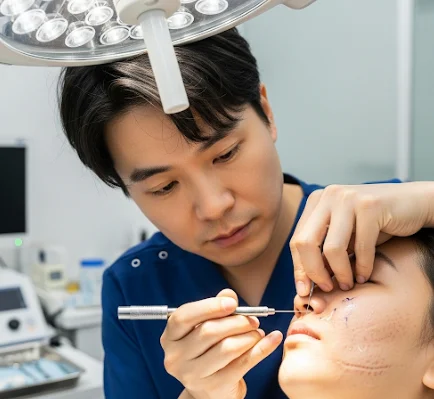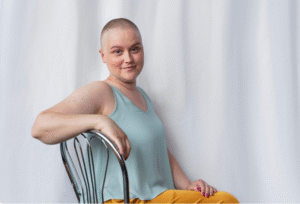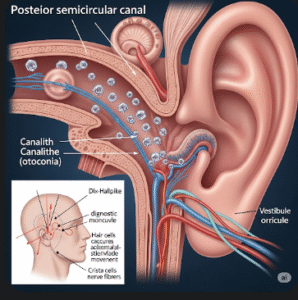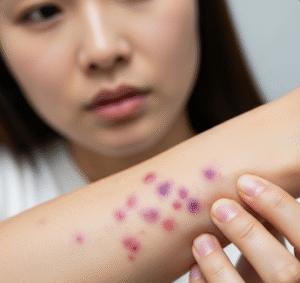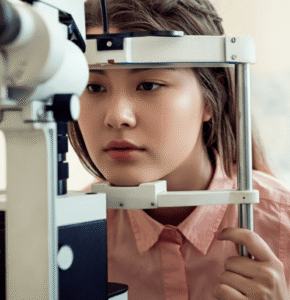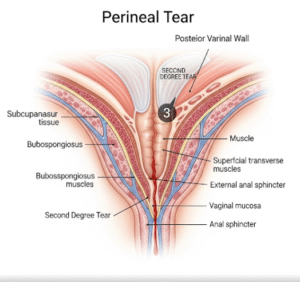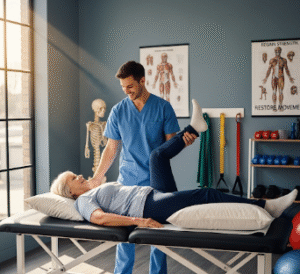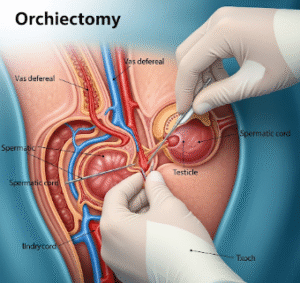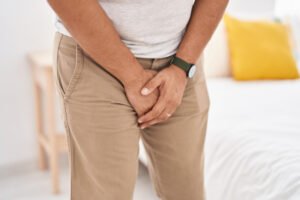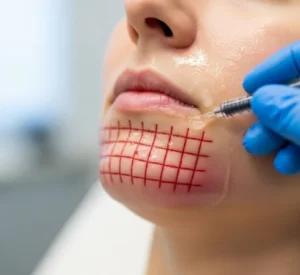What it is in Korea
➤ Subcision for scars in Korea is a minor surgical dermatology procedure used to treat depressed (atrophic) acne scars, especially rolling scars tethered to deeper skin layers.
→ The procedure involves inserting a fine needle or cannula under the scar to break fibrotic strands pulling the skin down. This releases the scar tissue, allowing the skin to rise and stimulate new collagen formation.
✦ Subcision is often performed alone or in combination with other treatments like fillers, microneedling, PRP, or fractional lasers for optimal results.
✔ In Korea, subcision is a highly refined procedure, performed with precision tools and often paired with scar-specific aftercare to ensure minimal downtime and long-lasting improvements.
Why it’s done in Korea
▸ Medical reasons → Atrophic scars caused by acne do not improve with creams alone. Subcision physically releases the scar tissue for visible lifting.
▸ Aesthetic reasons → Smooth, scar-free skin is a major standard in Korea, and subcision restores texture and skin confidence.
▸ Preventive reasons → Early treatment of tethered scars prevents them from deepening over time.
✔ Dermatologists in Korea recommend subcision when:
- Patients have rolling scars or tethered boxcar scars
- Scars remain despite chemical peels, lasers, or topical care
- Patients want long-term collagen stimulation with minimal surface damage
- Combination therapy is needed for multi-type scars
Alternatives in Korea
Although subcision is highly effective, alternatives or combined therapies are also common in Korean dermatology:
➤ Procedural alternatives
- Fractional CO₂ laser → resurfaces skin and stimulates collagen
- Microneedling with RF → collagen induction therapy for fine scars
- TCA CROSS → chemical reconstruction for ice-pick scars
- Dermal fillers → temporary lifting of depressed scars
➤ Topical and oral options
✔ Retinoids → stimulate mild collagen remodeling
✔ Azelaic acid → improves pigmentation but not deep scars
✔ Isotretinoin → prevents new scars by controlling acne
✦ In Korea, subcision is rarely used alone—it is almost always part of a customized multi-modal scar treatment plan.
Preparation in Korea
Before undergoing subcision, Korean dermatologists emphasize preparation:
▸ Pre-treatment skincare
→ Avoid strong acids, retinoids, and exfoliants 3–5 days before.
→ Apply broad-spectrum sunscreen daily to reduce risk of pigmentation.
▸ Medical consultation
✦ Dermatologist evaluates scar type, skin thickness, and past acne history.
✦ A personalized plan may include fillers, laser, or PRP combined with subcision.
▸ Lifestyle guidance
✔ Stop smoking and reduce alcohol for better healing.
✔ Avoid aspirin or blood thinners if possible (to minimize bruising).
How it’s done in Korea
Subcision in Korean dermatology clinics is a quick procedure, usually completed within 20–40 minutes:
- Cleansing & numbing
➤ The skin is disinfected, and local anesthesia is applied. - Needle or cannula insertion
→ A fine hypodermic needle or blunt cannula is inserted under the scar. - Release of fibrotic bands
✦ The dermatologist moves the instrument in a controlled fanning motion to cut fibrous tissue pulling the skin downward. - Collagen stimulation
✔ The release triggers controlled wound healing, encouraging new collagen production that fills the depression. - Optional combination
→ Many Korean clinics immediately follow subcision with filler injection, PRP infusion, or laser therapy for faster recovery and enhanced results.
Recovery in Korea
▸ Immediate phase (1–3 days)
✔ Mild swelling, redness, and bruising are common.
✔ Makeup should be avoided for at least 24 hours.
▸ Short-term recovery (1–2 weeks)
→ Bruising gradually fades.
→ Improvement in scar depth is often visible after the first session.
▸ Long-term results (2–6 months)
✦ Multiple sessions (2–4, spaced 4–6 weeks apart) may be required.
✦ Collagen remodeling continues for months, leading to progressive scar improvement.
Complications in Korea
Subcision is generally safe when performed by trained dermatologists, but risks include:
➤ Common effects
- Temporary bruising and swelling
- Mild soreness at the treatment site
➤ Rare complications
✦ Infection (extremely rare due to sterile procedures in Korean clinics)
✦ Overcorrection or uneven skin surface (minimized by experienced doctors)
✦ Pigmentation changes in darker skin if post-care is neglected
✔ Korean dermatologists reduce risks by using blunt cannulas, applying strict sterilization, and combining treatments with soothing aftercare like LED therapy or calming masks.
Treatment Options in Korea
Korea is a global leader in acne scar revision, making it one of the best destinations for subcision treatment.
➤ Major hospitals
- Seoul National University Hospital Dermatology → Offers advanced subcision programs for acne scars with laser integration.
- Asan Medical Center → Combines subcision with fillers and fractional lasers for complex scar cases.
➤ Private dermatology clinics (Gangnam, Apgujeong, Myeongdong)
✔ Oracle Skin Clinic, Banobagi Dermatology, ID Dermatology → Specialize in multi-session subcision scar treatments paired with PRP, lasers, or dermal fillers.
✔ Many clinics offer medical tourism packages, including translation, consultation, and aftercare skincare kits.
➤ K-beauty integration
✦ Subcision programs in Korea are usually complemented with hydrating essences, sheet masks, and barrier-repair creams.
✦ LED therapy and calming facials are often provided post-treatment to speed recovery.
Conclusion in Korea
➤ Subcision scars treatment in Korea is one of the most effective methods for correcting depressed acne scars, especially rolling and boxcar scars.
→ The technique physically releases tethered scars, while stimulating new collagen for long-term improvement.
✦ With Korea’s expert dermatologists, advanced technology, and integration with K-beauty aftercare, subcision provides patients with dramatic scar reduction and smoother, more confident skin.

